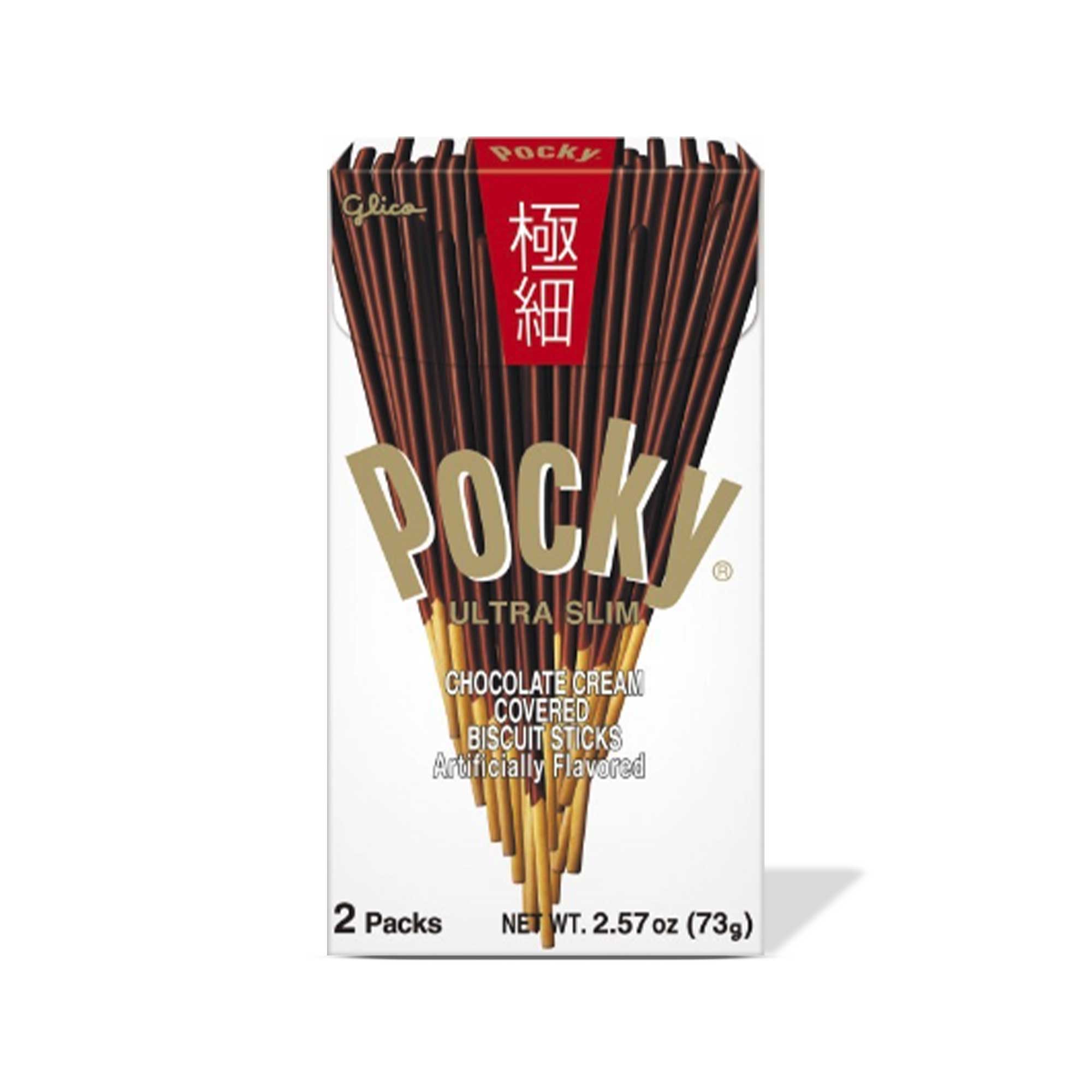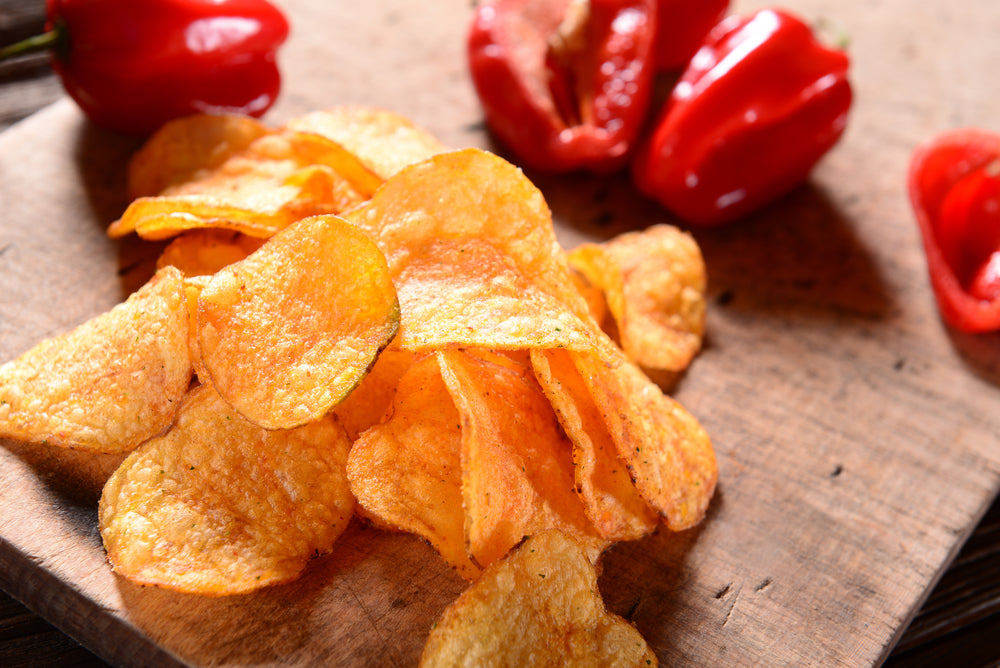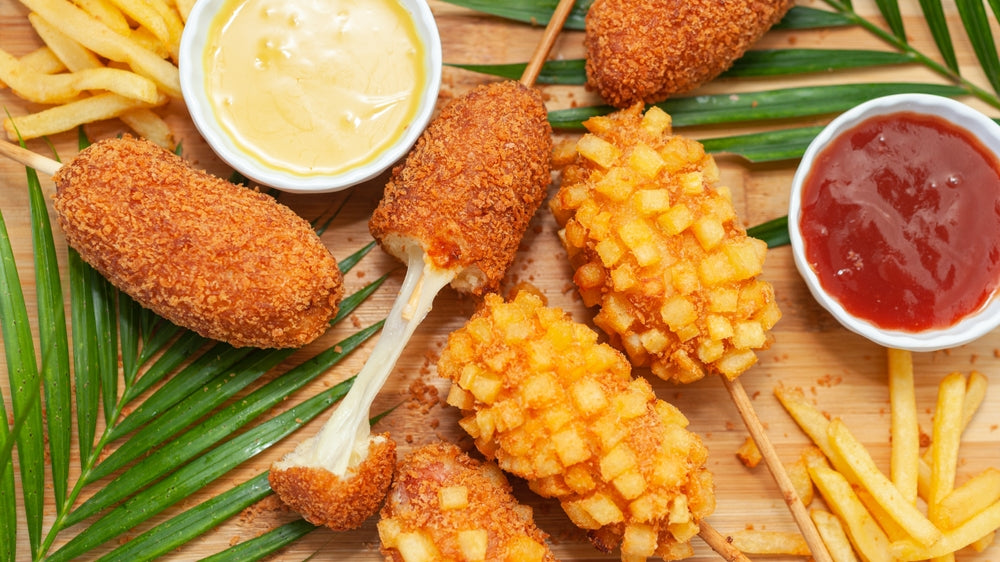Pork Floss: The Savory Staple of Asian Cuisine
Perhaps you've seen bonito flakes atop tasty street food favorites like takoyaki. If so, you'll be familiar with thinly shaved protein that offers a delicious flavor boost in Asian cuisine. In this case, we're talking about another type of protein - pork floss, which has a similar fluffy appearance. It's a shredded, dried pork topping you'll see on anything from congee to stir-fried recipes and steamed veggies. It offers one of the most sought-after flavors in Asian recipes - umami.
Besides being a delicious topping for rice dishes, it can also be used as a filling, flavor agent for baked goods, and more. It's a versatile ingredient that can be eaten plain or paired with various foods, from sweet to savory. Below, we explore this Chinese-style meat floss, a pantry staple you'll want to dig into for its unique texture, appearance, and taste.

Introduction to Pork Floss: A Culinary Delight
Pork floss is an ingredient that originates in China. It's made from dried/dehydrated pork that is shredded, leaving behind flavorful meat pieces that you can add to nearly anything. This floss meat is typically seasoned, stewed, shredded, then cooked until fluffy and light, creating a cottony texture. Depending on the brand or who makes the pork floss, the seasoning, sauces, and spices will differ.
This ingredient, also known as yuk sung and rousong, is used in many recipes, from snacks to meals. It's common to see it in Southeast Asian dishes, including Thai food, even though it's an ingredient produced in China.
There are two types of meat floss: pork fu and pork sung. While they are quite similar, there are small differences between the two. Pork fu is a variety that has larger pieces since it is not shredded as much as pork sung. Additionally, pork fu is not fried as much. Often, the two types are used as substitutes for each other since the differences are minimal.
Some describe pork floss as a cotton candy-like consistency, as this thinly shaved meat dissolves quickly in your mouth like the dessert. They have a crunch when you first put the pork floss pieces in your mouth before they dissolve. Each bite of these broken meat pieces offers a delicious, savory, sweet, umami flavor.
The Making of Pork Floss: From Pork Tenderloin to Shredded Delicacy
While many purchase pork floss at the store, it's quite easy to recreate at home. Making meat floss begins with pork sirloin, pork loin, or another similar lean pork cut. This pork meat is simmered in a large pot with seasoning/spices/sauces. It's common to be simmered with ingredients like light soy sauce, oyster sauce, and Chinese five spice powder.
Once the pork has been cooking for several hours, it should be fork-tender. At this stage, the liquid is drained from the pot, and the meat is shredded. Then, it is tossed in a pan with oil and fried until it has a crispy, fluffy, and cottony texture. Once it gets to this stage, you can add this beloved Chinese snack to any recipe you wish.
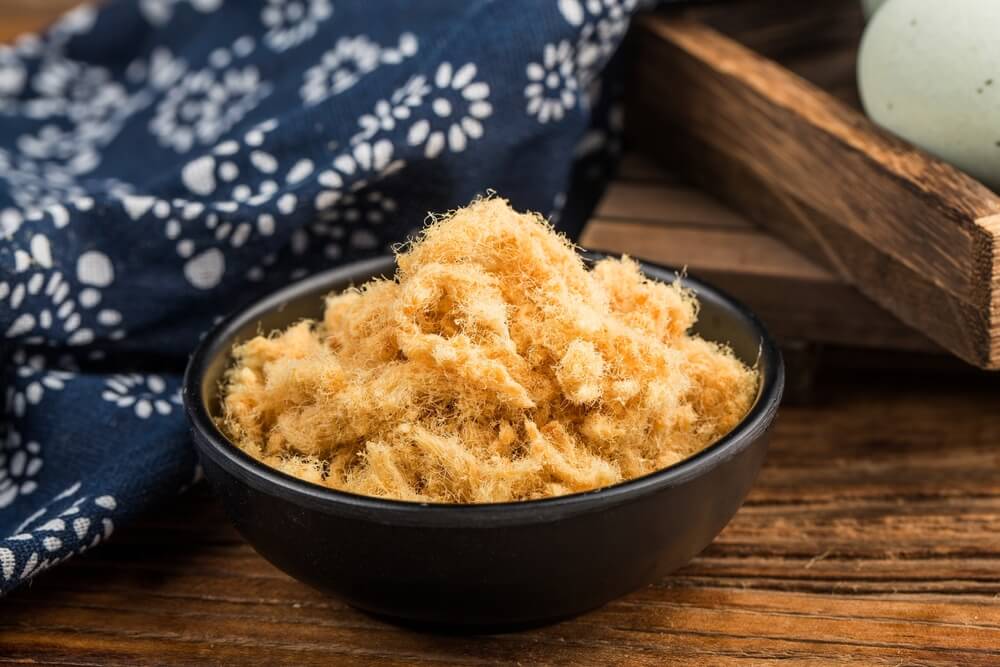
Soy Sauce in Pork Floss: Balancing Flavors with Light and Dark Varieties
There's a reason the recipe typically includes both light and dark soy sauce, as they each serve a different purpose in pork floss. Dark soy sauce is responsible for creating a darker color on the meat, while light soy sauce provides a deliciously savory taste. Of course, both types of soy sauce help add an umami taste to the meat floss. Though, the light soy sauce has a bolder flavor.
Pork Floss Buns: A Popular Asian Bakery Treat
One of the most common ways to enjoy pork floss is by adding it to buns. These shredded meat buns are often offered in bakeries and are typically eaten quickly, as mayonnaise is on top of each bun. Pork sung buns (another name for this tasty treat) are made with milk bread dough. Since they're made with milk bread, the buns have a delightfully soft, fluffy texture. Once out of the oven, they're covered in mayonnaise and a heavy hand of pork floss.
This pork floss creates a unique appearance, with the fluffy shredded meat in a thick layer on top of the buns. Since mayonnaise has dairy in it, this is a treat that is meant to be consumed quickly once purchased at the bakery. Other toppings can also be added to the pork floss buns, like furikake, dried seaweed, and sesame seed mixture.
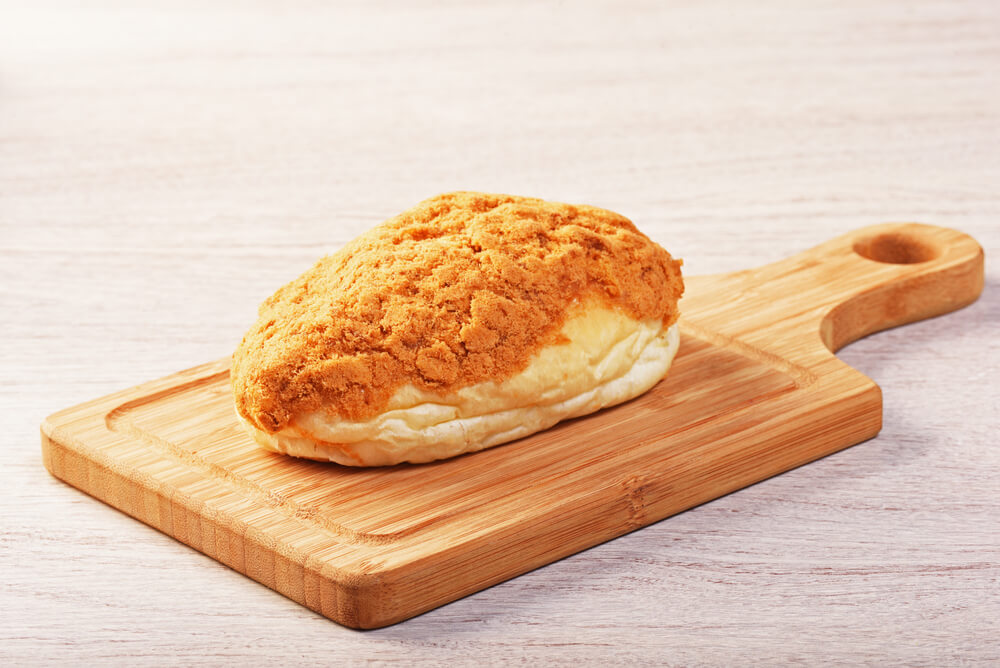
Homemade Pork Floss: A Step-by-Step Guide
If you're craving pork floss but don't live near an Asian market or can't find it at your local stores, you can recreate this yummy ingredient at home. Here's a quick step-by-step guide for this yummy pantry staple.
Ingredients
-
Pork tenderloin
-
Fresh ginger
-
Shaoxing wine
-
Green onions
-
Dark and light soy sauce
-
Sugar
-
Chinese five spice powder
-
Pinch of salt
Directions
-
Start by rinsing the pork meat and chopping it into evenly sized-cubes.
-
Then, boil it for a few minutes to help get rid of impurities with the wine, ginger, and green onions.
-
Strain the water and add the remaining ingredients (plus enough water to cover the pork meat) into the large pot.
-
Bring the dish to a boil, then lower the temperature until it's simmering.
-
Allow the dish to cook for a few hours until the pork is fork-tender.
-
Strain the meat from the liquid and shred it.
-
In a pan on low heat, cook the shredded meat until it gets fluffy.
-
Repeat step seven in batches until the entire meat is dried.
-
Store in an airtight container and use according to your needs.
Notes
-
You can cook the meat in a pressure cooker instead of a pot for a quicker recipe. This method will tenderize the meat in about 40 minutes instead of 2-3 hours.
-
It's important to cut the pork pieces into the correct size. Otherwise, the pork floss will be too short/long. Aim for cubes that are about 3 inches long by 1.5 inches wide. The pieces should be about the same size so they cook evenly/do not dry out while simmering.
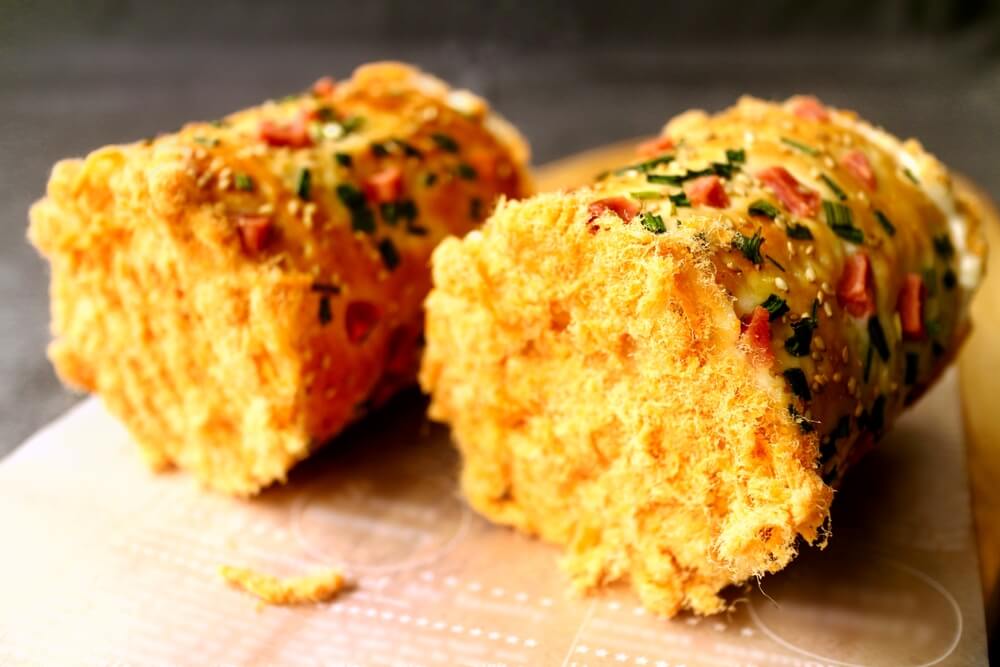
Chinese Style Pork Floss: A Traditional Recipe
What makes pork floss stand out is its sweet, savory, salty flavor that develops as it's simmered in a pot. Generally, this flavor is achieved by a combination of soy sauce, aromatic herbs/spices (like star anise), and sugar. Another step that helps differentiate pork floss from other meats is the final drying process is done over lower heat in a pan/wok. As the meat is drying, it is slowly stirred/separated, ensuring no bits are burnt onto the pan. This method helps create the crunchy, light, fluffy consistency the dish is known for.
Lean Meat Yields: The Best Cuts for Pork Floss
Lean pork is the best option for making pork floss, so most people use tenderloin, pork sirloin, or a similar cut to create this pantry staple. Using a lean cut of pork makes it easier to shred the meat before drying it out. While you can use a fattier cut, you'll need to spend more time prepping the meat as the fat/skin must be removed first. This recipe can also be made with other types of lean meat, such as chicken, fish, turkey, or beef. The only requirement for the meat is that it is a lean cut.
Pork Floss as a Versatile Ingredient in Asian Dishes
As mentioned, this ingredient is versatile, as you can enjoy it with many dishes. One of the common ways that people eat pork floss is simply by itself. Since it's so flavorful, you can snack on it just like you would cotton candy. Or, add pork floss to buns as a delicious topping. In some cases, this ingredient is incorporated into buns as a filling.
Those interested in creating a quick meal using this ingredient can try meat floss sandwiches. This is similar to a ham sandwich, though you'll use floss meat instead of ham. Then, you'll add ingredients like mayo and veggies to the sandwich. Another common way to eat meat floss is on top of rice dishes or congee. Once the congee is prepared, the pork is added to the top, along with onions, salted duck eggs, and other tasty toppings. It's also great as a snack over plain white rice, as it boosts the flavor and protein content.
If you want a healthier way to dig into this ingredient, add it to salads. It creates a yummy crunch and flavor. You can also add it to scrambled eggs, shrimp rolls, stir-fries, savory pancakes, and more.

Nutritional Aspects of Pork Floss: A Protein-Rich Topping
While many enjoy pork floss for the deliciously savory crunch it adds to recipes, it's also a great option for nutritional needs. Since it's primarily made from meat, this dried pork has a good amount of protein in each serving. For about 3.5 ounces of pork floss, you can expect around 45g of protein. This ingredient is also great for those on a low-carb diet, as protein (along with fiber) can help keep you full for longer. There are additional nutrients in this dried, shredded pork, including B12, zinc, and iron.
Conclusion: The Enduring Appeal of Pork Floss in Asian Cooking
Pork floss has been around for about 800 years, at least according to legends of the dishes' origination. It was initially used as an easy method for transporting meat, as the dehydrated meat was easier to carry and stayed good for a long time. Since then, it has become a staple in many Asian recipes, from dishes in Thailand to its country of origin, China. It has even spread to areas outside Asia (like various African countries). With its versatility and umami-rich flavor, this ingredient will remain a staple in Asian households for many years to come.
If you don't want to create homemade pork floss, you can find options like Heichiao Rousong Pork Floss at Bokksu Market. There are also many other pantry staples on Bokksu Market, from dried goods like rice to sauces, seasonings, and more. Turn meat floss into a meal with ease by adding it to frozen heat-and-eat dishes. Check out Bokksu Market for additional sweet/salty snacks to pair with pork floss to create a unique charcuterie board.
Author Bio


